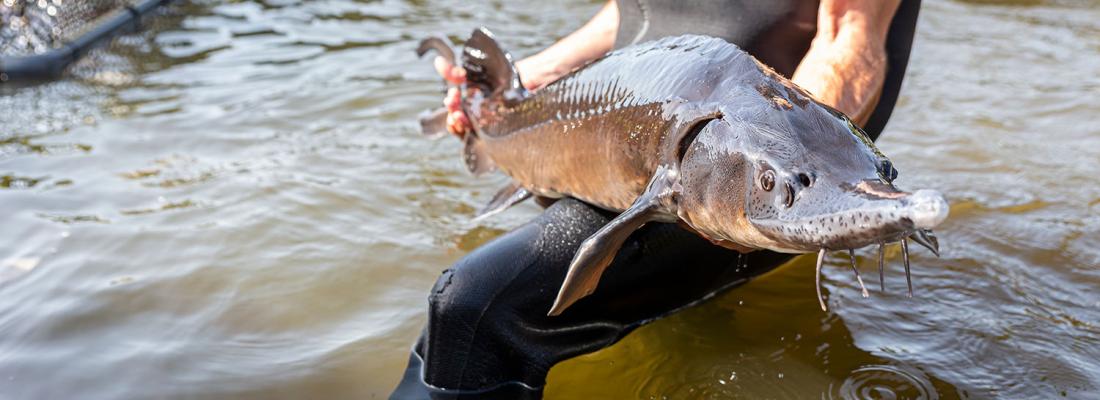Agroecology Reading time 3 min
Genomics and caviar production: a genetic sex marker discovered in sturgeons
Published on 24 November 2020

*Syndicat des Sélectionneurs Avicoles et Aquacoles Français, or French Poultry and Aquaculture Breeders Technical Centre
For many decades, scientists have been looking for genetic markers specific to the sex of sturgeon. Unlike other vertebrate species such as mammals, sturgeons do not have differentiated sex chromosomes1 that could be identified by microscopic examination of their karyotype2. Until now, the most common method to determine the sex of fish has been ultrasound examinations of adult animals whose sex organs have already developed, which is only possible after several years of rearing. Thanks to genomic sequencing by INRAE of some fifty male and female sterlets (a sturgeon species), the scientists have now identified a specific genome region in females. Using samples from other species, made available by the French industrial partners in this project, the research team was able to confirm that this specific female genome region is common to numerous other sturgeon species. This discovery constitutes a major advance in our knowledge of sex determination in sturgeon, and will also enable the development of genetic sexing tests that will be much more reliable and can be performed at an earlier stage than current ultrasound techniques.
A genome region conserved during evolution in this fish family
Sturgeons are one of the most ancient groups of finfishes. Over evolution, they underwent several complete duplications of their genome, which led to a doubling of their initial number of chromosomes, followed by numerous losses or modifications of their respective genetic information. This poses intriguing questions as to the fate of the sex chromosomes thus duplicated and the regulation of sex determination mechanisms. Indeed, the duplication of sex chromosomes involves a risk of species deviation towards populations made up of just males or just females. However, the region discovered by the scientists has remained the same in at least six sturgeon species, even though the genome of some of them has been duplicated several times over 180 million years of evolution. This unexpected result raises numerous questions for scientists regarding the evolution of this particular region and the regulatory mechanisms associated with it.
Directly applicable in aquaculture and caviar production
Caviar results from the processing of sturgeon eggs, so therefore requires the rearing of female fish. Currently, fish farmers use an ultrasound examination to differentiate between male and female sturgeons. But this is complicated to perform, not entirely reliable and can only be carried out when the animals have reached puberty (at least two years). The males are then sold for their flesh, and the females are kept until they start to produce eggs. Discovery of the DNA sequence specific to females will enable determination of the sex of fish at a very early stage after hatching, thanks to the development of an extremely reliable genetic test.
The discovery of this female-specific genome region in the sturgeon is a major advance in biology, but it raises some new questions for scientists: how is it possible to explain the evolution of this particular region? What are the associated molecular mechanisms that control sex differentiation in these species? For aquaculture, the development of these sexing tests, that are more reliable than ultrasound, will enable early selection of the most interesting fish for caviar production. This discovery also opens new opportunities to facilitate conservation measures targeting different sturgeon species, most of which are in severe decline (such as the European sturgeon that today is only present in the Gironde river), thanks to the development of a non-invasive sexing test for programmes to reintroduce the species and characterise sex distribution in wild populations.
1 A chromosome is a microscopic element made up of a DNA molecule and proteins that carry some of the genes in a living organism.
2 The karyotype is the standard arrangement of all chromosomes in a cell, determined under a microscope.
|
Reference Heiner Kuhl et al. A 180 My-old female-specific genome region in sturgeon reveals the oldest known vertebrate sex determining system with undifferentiated sex chromosomes, Philosophical Transactions of the Royal Society B (in press, accepted on 23 October 2020) – preprint available via BioRxiv: https://www.biorxiv.org/content/10.1101/2020.10.10.334367v2 |
|
This study was carried out in the context of the following three research projects:
|
